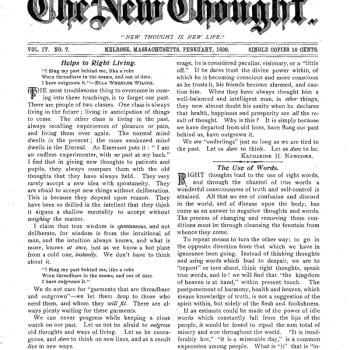Prince Gallitzin State Park is a beautiful site in west-central Pennsylvania, best known for a popular lake. The Russian or otherwise Slavic name is intriguing. Plenty of Slavic migrants came to western Pennsylvania through the years, but very few of them, surely, were princes. In fact, the story of this particular prince throws a great deal of light on the early religious history of the frontier, and specifically of the Catholic church. Prince Gallitzin himself might actually be a saint before too long.
The prince actually reads like a character from a Fyodor Dostoevsky novel of the American frontier (and isn’t that an intriguing thought?). Nobody would have dared invent him.

Inventing Father Demetrius
The prince in question is otherwise known as Dimitri Galitzyn, or else Demetrius Augustine Gallitzin (1770-1840), and he personified the cosmopolitan character of the Enlightenment – hence the variety of names and titles. The family connections of Dimitri, as I will call him, really matter in any attempt to understand him. He was the son of the Russian ambassador to the Netherlands, an offshoot of the very powerful Golitsyn line. The father was closely associated with such luminaries as Voltaire. The son, of course, spoke French as his first language. His mother was a German countess who returned to the Roman Catholic church when Dimitri was in his teens, and he followed the same course in 1787.
In the context of the time, this was a radical and quite perilous course for a member of the Russian elite, as he was cutting himself off from any prospect of service to the state or the army, which were both resoundingly Orthodox.
Gallitzin in the New World
In 1792, Dimitri traveled to the new United States, where he was ordained a priest in 1795; he was in fact the first American priest to undergo all his training in the country. He was dispatched to what was then the frontier in Pennsylvania, where he was based at the vital Catholic missionary center of Conewago. I won’t go into this in any detail here, but one of his early tasks was investigating a sensational haunted house story known as the Wizard Clip, which occurred over the state line in what is now West Virginia. Maybe I will save that really remarkable story for a Halloween post.
From 1799, “Prince Gallitzin” – or Father Demetrius, or “Augustine Smith” – began a quite incredible missionary career through the Allegheny mountains, which spanned forty years.
By way of background, this was very much border country, from which most white settlers had been expelled during the Revolutionary Wars. However, it now developed a boom economy for its rich lands, augmented by lumber and in some places, by ironmaking. The population grew mightily.
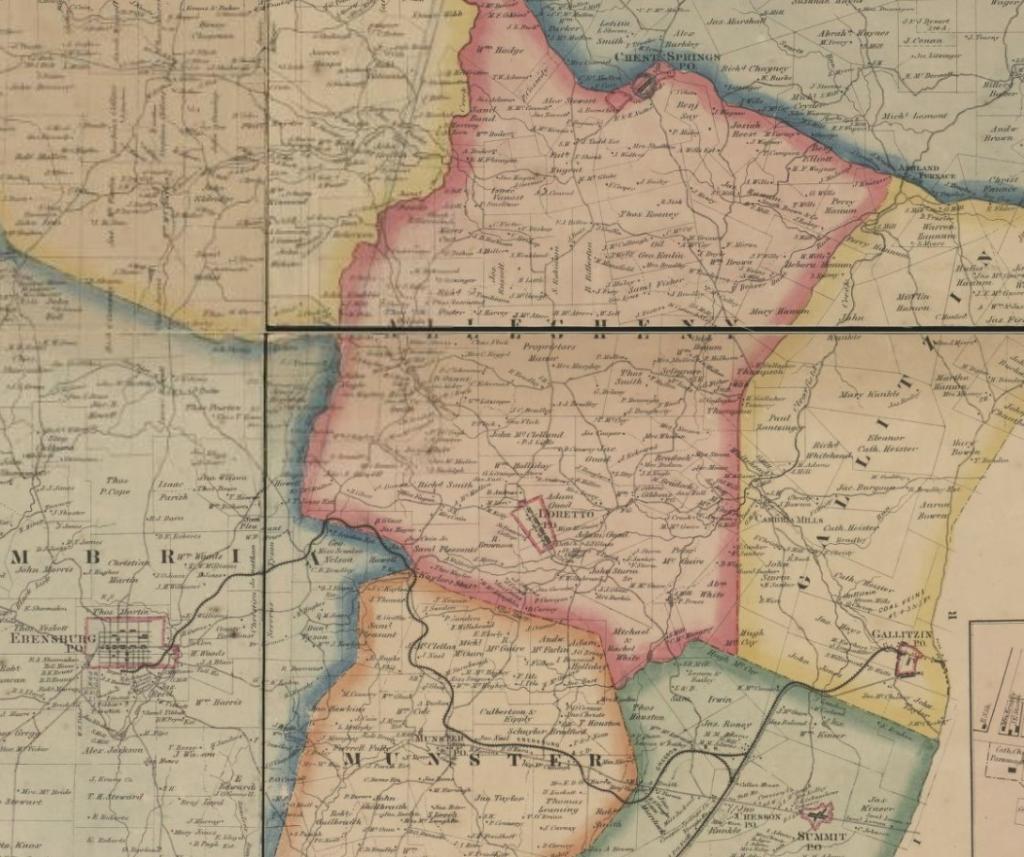
The Church on the Frontier
This was a pivotal time in American religion generally. In colonial times, the most successful churches had been closely tied to older settlement patterns bound to towns and villages, and the religious scene was dominated by Congregationalists and Episcopalians. Both assumed highly trained ministers placed in settled congregations. None of those older bodies coped well with the very rapid population expansion from the 1780s onwards, and their relative share of the churchgoing population collapsed. The denominations that flourished expected less training in their ministers, and placed the highest value on flexibility of organization, with a high degree of lay influence.
Between 1776 and 1850, the great story in US religion was the tremendous upsurge of the Methodists, who proved ideally suited to rapidly expanding settlement, with their decentralized and autonomous structures, and their willingness to use clergy lacking high academic qualifications. Baptists did almost as well. By the 1850s, these two Protestant churches were overwhelmingly the largest forces in American religion.
So, where in all this did Catholics stand? Catholics, after all demanded a highly trained ministry under tight hierarchical control, yet they did very well indeed in the new setting of American empire, and they did so largely by acting like the contemporary Methodists. Catholics fully applied the lessons learned over centuries of experience in several different colonial empires – French, Spanish, and other – when central authorities had dispatched clergy to serve on distant missionary frontiers, and to build up the church presence. Missionary priests wandered widely through the immense regions in which they were stationed, and those priests exercised all the flexibility demanded by the demanding environment..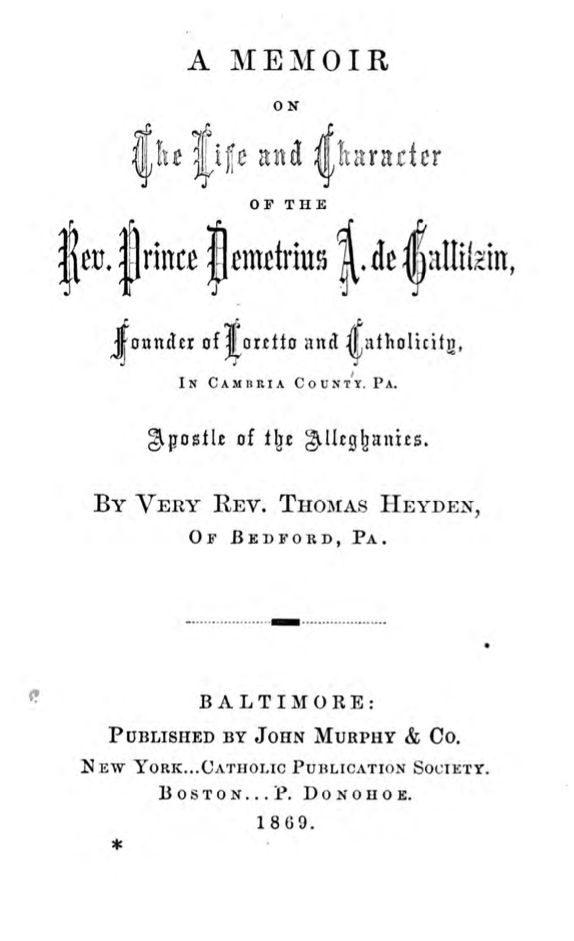 Missionary to America
Missionary to America
Even by the standards of these borderland priests, Gallitzin was a near miracle. As an awed biographer wrote in 1869, when he began,
What now constitutes the dioceses of Pittsburgh, Erie, and a large part of the Harrisburg new episcopal see, was then the missionary field of a single priest – Rev Prince Gallitzin … There was not from Conewago in Adams county, to Lake Erie – from the Susquehanna to the Potomac, a solitary priest, church or religious establishment of any kind when he opened his missionary career (Very Rev. Thomas Heyden)
Gallitzin acquired a base from Captain Michael McGuire, a Revolutionary War veteran, in what is now Loretto, PA, and from here he planned new settlements:
A spiritual empire – a Catholic colony of vast dimensions was the bright vision that dazzled his ardent imagination and filled his whole soul.
He traveled very widely, in impossible conditions, and often in ill health. Here is Sarah Brownson’s biography:
To rise long before the light and sit, fasting, for hours in the church that never knew a fire, hearing confessions before Mass on Sundays, to preach to them in English and in German, explaining their religion to them from its first precept to its sublimest result, to baptize their children, to comfort their dying, to bury their dead, this for one little parish alone, would have taxed his strength, never great, but duties like these are but a small part of a missionary’s life.
The missions are many and widely scattered, they must be reached at the appointed time, let the weather be what it will, the perils what they may ; the priest must ride and ride though the rain falls in torrents, or comes crashing over the mountains, in rage and fury; though in stillness, more dreadful, often,than any storm, the dead-leaves rustle under his horse’s feet, like the sound of stealthy Indian, or sly panther, or approaching tramp of bear or wolf from the mysterious depths of the surrounding forests ; when the long day is thus passed and night comes on, shutting out the last hope of a human face, or thin cloud of smoke curling from some human fireside, it can bring no better promise for the morrow.
When a shelter is reached, how cold and poor and crowded it is ! There is no warmth, no repose, no seclusion in which to prepare for the round of duties soon to press fast and close upon each other; Mass, confessions, baptisms, marriages, funerals, exhortations, advice, consolations, and then the long journey, to some other crowded log hut, where the people will gather to meet him with all their accumulated load of sins and sorrows, of disappointments and mishaps: an ever-recurring, nameless labor, never ending, always renewing itself, bringing with it no consciousness of noble talents grandly used, but often dissatisfaction illy concealed, misjudgment, even open abuse from those he has tried most to benefit.
He spent lavishly of his own funds to build up settlements, going deeply into debt. That situation damaged him when he was an obvious candidate to become one of the country’s earliest Catholic bishops, but it was reasonably objected that he was so very bad at handling money. That absolutely implied no corruption or irresponsibility: he just tended to give away every penny he ever had.
That story about the bishopric is significant in suggesting just how much weight Gallitzin carried in the church of his day. By way of background, the first Catholic diocese of the new United States. Baltimore was the first in 1789, and in 1808, it was followed by four new creations. The locations of three of these would occasion no great surprise, being at Boston, Philadelphia and New York, but the fourth was at Bardstown, Kentucky. In making this seemingly eccentric choice, church leaders were thinking shrewdly about the obvious future directions of western settlement, along the Ohio and its tributaries. That Bardstown diocese covered what would ultimately become ten US states, and it was Bardstown for which Gallitzin was proposed in 1815. At various points between 1814 and 1830, he was seriously suggested as a candidate for the diocese of Philadelphia and Cincinnati, and in 1833, he was proposed for the new see created at Detroit. Gallitzin himself long lived in hope that Loretto itself would become the first and main bishopric for Western Pennsylvania, but of course booming Pittsburgh won out (that diocese dates from 1843).
For several years, Loretto was the only Catholic church in the US standing between Lancaster, PA, and St Louis, Missouri. Put another way, when the Loretto settlement began, it was the only English-speaking Catholic foundation west of Baltimore. Reportedly, the number of Catholics in the area of his mission grew from perhaps a dozen in 1800 to ten thousand by 1840. Gallitzin became known as the Apostle of the Alleghenies.
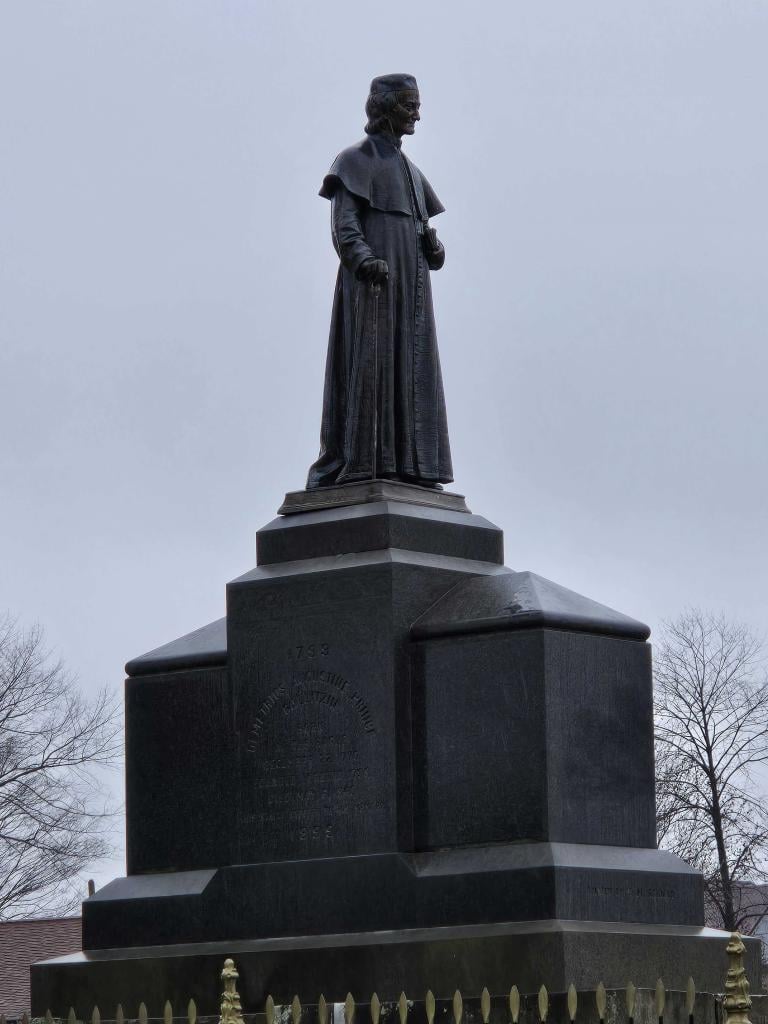
Afterwards
And there the Prince’s story does not end. In 2005, the Vatican declared Gallitzin a Servant of God, a stage on the process to canonization. I like to think that if that happens in due course, his memory will attract pilgrimages, in a part of the country already well marked by Christian shrines and holy places.
Next time, I will talk about the deep and often forgotten sacred quality of a substantial landscape in that region, an area that in many countries would already be crisscrossed by pilgrim paths.
Just in passing, I am of course very familiar with Orestes Brownson as a critical figure in nineteenth-century American culture, in Transcendentalism, and later in Catholic history. I am ashamed to say that I did not know about his daughter Sarah Brownson, who in her day was well known for her sweeping biography of Gallitzin, quoted here. “The life of Gallitzin is her principal production, for which she spared no pains to collect such materials as remained. She more than once visited the scenes of the missionary’s labours, and formed the acquaintance of priests and others who had known him, collecting such facts and anecdotes of him as they remembered. It is a sincere and conscientious tribute to the rare virtues and worth of an extraordinary man, devoted priest, and humble missionary.”
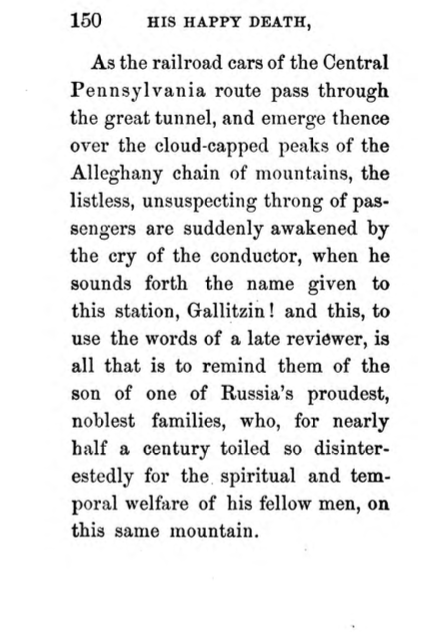 MAJOR SOURCES INCLUDE
MAJOR SOURCES INCLUDE
Sarah M. Brownson, Life of Demetrius Augustine Gallitzin, Prince and Priest (New York: Fr. Pustet and Co, 1873)
Margaret Bunson and Matthew Bunson, Apostle of the Alleghenies : Reverend Demetrius Augustine Gallitzin (Hollidaysburg, PA : Diocese of Altoona-Johnstown, 1999)
Thomas Heyden, A Memoir On The Life And Character Of The Rev. Prince Demetrius A. De Gallitzin : Founder Of Loretto And Catholicity, In Cambria County, Pa., Apostle Of The Alleghanies (Baltimore : J. Murphy & Co., 1869)
Reverend Peter Henry Lemcke, Life And Work Of Prince Demetrius Augustine Gallitzin (New York: Longmans, Green, 1940)
Daniel Sargent, Mitri; Or, The Story Of Prince Demetrius Augustine Gallitzin, 1770-1840 (New York; Toronto : Longmans, Green., 1945)





